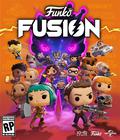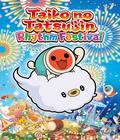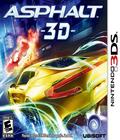Since the launch of the Game Boy Advance, every portable console has seen at least one or two iterations of Asphalt. The game series, which started out as a cell phone game before the iPhone came on the scene, was never a spectacular racing series, but it was a fun arcade-style racer that happened to feature a few licensed cars in its lineup. As the series progressed, it tacked on a few new features and modes, but it never elevated to AAA status. With the launch of the Nintendo 3DS, Ubisoft and Gameloft decided it was a good idea to take the series to a new dimension and provide an alternative at launch to those who weren't drawn in by Ridge Racer 3D. It's too bad that Asphalt 3D isn't up to snuff this time around.
At its core, Asphalt 3D is a pure arcade racer that seems to borrow elements from other racing games and mash them together into one package. Like Ridge Racer, the game places an emphasis on speed and drifting but using real cars in lieu of made up ones. In a small nod to Mario Kart, there are icons you can pick up to gain turbo, fix up your car or gain more cash. It also takes San Francisco Rush's idea of placing shortcuts all over the map as well as throwing in over-the-top elements, such as rooftop racing and ramps that help you jump over lakes. Finally, like the Burnout series, you have a leveling system and the ability to earn money through various stunts and crash into other cars, whether they're rival racing participants or NPCs.
From a gameplay perspective, the racing is solid. Cars are fast, and the track design is good. While the amount of boosts icons on each track is staggering, there are enough straightaways and wide turns that you'll feel compelled to keep using it at any given opportunity. The shortcuts are wild enough that even though there are only two on each track, you'll want to seek out each one. Every activity contributes to your overall profile progress, so you won't feel like you're wasting any time playing one mode over the other. Most importantly, the racing doesn't feel cheap most of the time. It takes a bit of skill and luck to pass some people ahead of you, but once you do, it'll take a spectacular crash to set you back far enough to the point that you can't catch up. That's something that can't be said for most racers on Nintendo's previous handheld console.
There are a few elements that weaken the racing experience. The racing doesn't feel cheap most of the time, but that praise goes out the window once cops are in the picture. For some reason, cops exist in the game, and with their overpowered vehicles and speed that outmatches your most powerful vehicles, you get the feeling that your race is pretty much over when they appear. There's also no indicator to let you know that your actions bring out these cops, so their appearance is a very unpleasant surprise.
While the game tries to emulate Burnout in a few ways, it doesn't necessarily get those things right. Because of some odd physics, it feels clunky when you try to get someone to crash. Whenever you tap a car, you'll either slow down, do nothing, or clip into the vehicle. While finally getting a rival vehicle to experience a devastating crash is satisfying, that satisfaction is taken away when you realize that the affected car simply flips into the air with no visible damage or sparks to make the crash seem serious. Speaking of damage, it's rather difficult to see your car's damage during a race. Your vehicle gets scuffs on the body, but until you finally get hit by enough cars, you'll never realize you're getting any at all. Fortunately, you can pick up icons to repair said damage, but since a damaged car races just as fine as a perfect one, the only reason to pick it up would be out of habit. Finally, the drift gameplay mechanic feels off. Like Ridge Racer, it's fairly easy to initiate drift, but it doesn't seem to do much aside from giving you a boost power. It makes you feel like you're driving slower than normal, so most people won't even bother with this gameplay mechanic at all.
The heart of the single-player game is Career mode, where you're given 14 different cups to compete in, each consisting of five events. Completing any of the events, as well as their secondary objectives, gives you experience to level up and money to spend. Rewards are also gained this way, and they include new cars to purchase, new parts to add and new tracks to unlock.
The tweaking aspect afforded by obtaining car parts is a nice touch, but it comes with some flaws. When equipping each part, you're shown which statistic will benefit from the addition. You aren't shown, however, how much of a benefit it is for the car. All you can really do is throw in the piece and hope it helps significantly. Another odd aspect is the fact that parts never have any negative effects to any stat. Unlike racing sims, everything is beneficial, and nothing is ever detrimental.
There are a plethora of events to go through in Career mode. Race is your basic race mode, where you're pitted against up to five other opponents on a track. Time Trial has you trying to finish all of the laps on a track before the timer runs out. Leader of the Pack is an elimination race, where the last person to cross the finish line in a lap automatically loses, and the winner is the first one to cross the finish line at the end of the final lap. High-Speed Chase has you trying to complete the race and outrun the law. The game ends when you get busted too many times. Vigilante lets you turn the tables, where you can be the one trying to take down the required number of racers in a lap limit. Cash Attack has you trying to gain as much cash as you can in a race while Drift has you trying to out-drift the competition and still win the race. Finally, Dual is a simple one-on-one race against a pre-selected opponent.
Free Race mode represents a smaller slice of Career mode's offerings. Only three of the events from Career mode (High Speed Chase, Race and Vigilante) are available, with the only advantage being that you can perform these events on any unlocked track with any unlocked cars. One new event introduced here is Ghost mode, which takes advantage of the system's StreetPass. As you play standard races in the game, you have a record of how you did in each race. With StreetPass on, you can automatically download other players' performances and play against them. The mode works well enough, considering that it's a workaround for players to experience multiplayer.
Multiplayer, while present, is a fairly limited experience. Like most of the games launched with the handheld, the multiplayer is local only, so don't expect to go up against players on the other side of the country. Only the basic racing mode is featured, but it supports up to six players, so it's one of the more involved racing options for the console. The big caveat for multiplayer is that each player is limited to the cars and modifications he has already unlocked on his own cart. It encourages players to go through the main game in order to be competitive, but those who want to jump into multiplayer right away will find the experience limiting.
Asphalt 3D has a few bright spots graphically, but it suffers from a myriad of issues that are especially visible in 2-D. The cars look great, and while they aren't exactly high-definition models of their real-world counterparts, they look rather impressive on the screen. Environments also look good, especially when you're driving through them at breakneck speeds. The frame rate holds steady most of the time, but it begins to break down when you have more than three cars on-screen simultaneously. The pop-up range for things like buildings and signs varies wildly between acceptable and too close, with no visible difference when I varied the driving speed. While the buildings look fine, things like trees and lampposts look horribly pixelated; this is more evident when you watch a replay of your race. Car crashes also look pretty bad since you see cars clipping at each other during their crash sequences, and with no visible deformation attached to the models, the whole thing appears cheap.
The use of 3-D in this title is both beneficial and detrimental. The game resorts to the use of some cheap tricks to show off its 3-D, such as when you're viewing cars in the garage and a floating HUD during races. They're gimmicky but impressive the first time you see them. The 3-D benefits come through when you're racing with your car since you see more detail than when you see the vehicle in 2-D. The dimension viewing change also comes with a few neat tricks, such as snow moving toward the camera when driving and gaining a better sense of depth for the road and its occupants; the floating icons don't look too bad, either. The use of 3-D is certainly the way to go with the game, but it comes with some problems. Cars, especially your own, sometimes look like they float above the road, and depending on the camera angle, you see a few instances where tire tracks float a little above the road. Frame rate slowdowns in 2-D get a bit worse in 3-D, while pop-up problems remain the same. It's a below-average graphical package, but at least 3-D makes it look a little more acceptable.
The controls, while perplexing in some areas, are fairly smooth. Portable Nintendo fans who love racers will find the use of the circle pad for steering to be a godsend, since it allows for precise controls over the vehicle. The L button changes camera angles while the B button handles braking. It's a simple enough system, but what feels perplexing is the placement of the nitro button — or, more accurately, nitro buttons since R, X and Y all strive to activate nitro at any time during a race. Why all three buttons were mapped to the same function is puzzling, and since the configuration can't be changed, you'll simply have to live with it.
The sound isn't half bad. The music, while original, goes with more of a techno vibe than what you'd normally expect from a racing title, but it fits well enough. The effects are exactly what you would expect from a racing game. Engines are loud, and metal scrapes sound harsh. One issue you will notice, though, is that once you don't have any opponents around, the sound of your own car engine is tinny and muffled. You have an announcer that chimes in at the beginning and end of every race to give some descriptive background of the track. While the voice is pleasant, the descriptions range from decent to corny, and since she says the same lines every time you visit a particular track, you'll start skipping these intros after you've heard them once.
In the end, Asphalt 3D falls below gamers' expected standards. As far as technical aspects go, the controls are fine, while the sound and graphics have some issues. The gameplay is solid enough, but there are very questionable mechanics in play that either do nothing to the experience or ruin a few good moments. Multiplayer is limited by closing off every other mode but one for play, but at least the game makes good use of the StreetPass feature. For racing fans who have become early adopters of the 3DS handheld, stick with Ridge Racer 3D for your racing fix. If you've already grown tired of that game, then try renting this one to see if you can overcome the flaws and squeeze some enjoyment from the title.
Score: 6.0/10
More articles about Asphalt 3D











 In Asphalt 3D you'll power a wide range of high-performance cars and race through 17 exotic locations with the 3DS system's accelerometer, creating the most realistic, immersive racing experience yet.
In Asphalt 3D you'll power a wide range of high-performance cars and race through 17 exotic locations with the 3DS system's accelerometer, creating the most realistic, immersive racing experience yet.





























